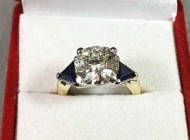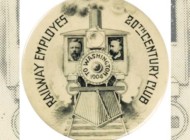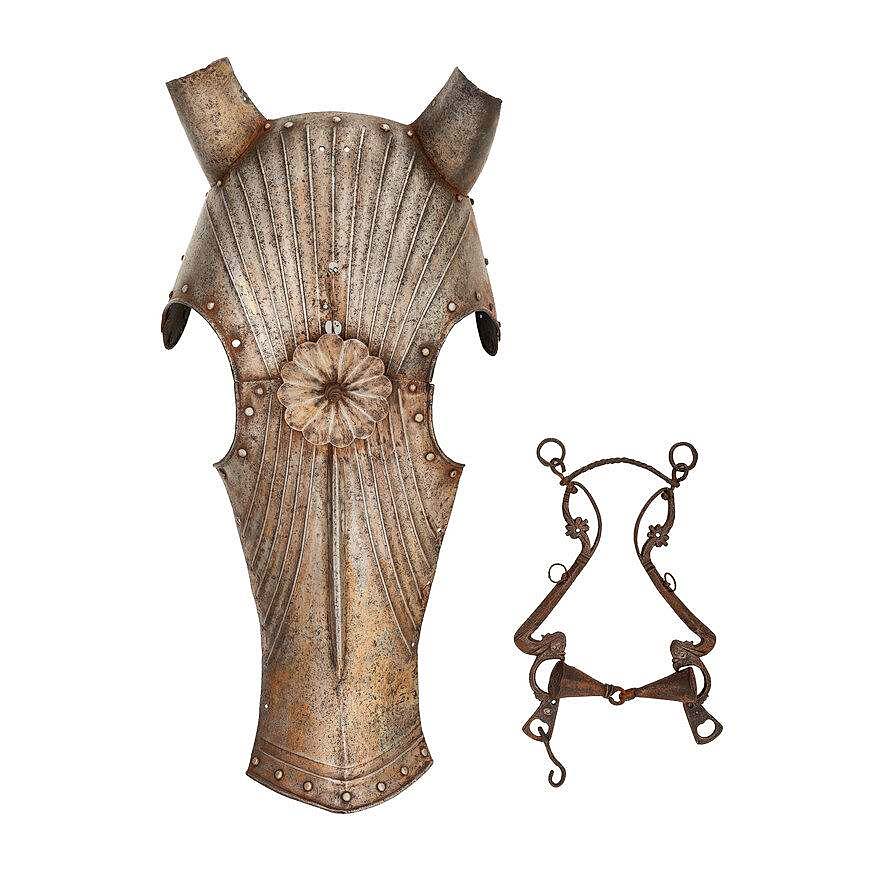
The highest price of all three auctions — $60,000 — was achieved by this Nineteenth Century reproduction unicorn-style chanfron, 24½ inches long, and its iron curb bit, that sold on the first day ($2/4,000).
Review by Carly Timpson
CINCINNATI, OHIO — In a series of auctions spanning three days, Freeman’s | Hindman presented 760 lots of arms and militaria and American historical items, including photography and ephemera. On October 23, the Arms, Armor and Militaria auction, in partnership with Cowan’s Auctions, offered 262 lots of historical, military and sporting arms and other related items. The next day, Freeman’s | Hindman auctioned 201 lots from dealer Stephen White’s printed and manuscript Americana collection in the October 24 Visions of America: The Stephen White Collection sale. October 25 brought American Historical Ephemera and Photography to the forefront with 297 lots in those titular categories.
The top price across all three sales was solidified with the second lot on the first day, not to be beaten by any later lots. Leading the Arms, Armor and Militaria auction, and the series overall, was a Nineteenth Century reproduction chanfron, or facial armor for a horse. The Germanic unicorn-style chanfron exceeded its $2/4,000 estimate to achieve a realized price of $60,000. The polished steel chanfron had Maximillian-style fluting and a riveted unicorn horn mounted to a floral emblem on the brow. Some traces of leather remained in the mounts, though it was missing its leather tie-downs. Along with its iron curb bit with floral embellishments, the lot was sold to a returning private collector.
Other notable results from the Arms, Armor and Militaria auction included several guns. Earning $11,400 was a matched pair of Arrieta Sidelock 20-gauge shotguns. Made in 1987, the guns had “blued barrels with polished frames and accents in walnut English-style stocks,” as described by the auction catalog. Each gun was engraved with the maker’s mark “Fabrica de Arrieta y Cia. Elgoibar” and further engraved on the barrels “Fca. De Escopeias Arrieta ~ Elgoibar Espana.” The bottom of each butt was fitted with a gold oval bearing the monogrammed initials “RDK.”
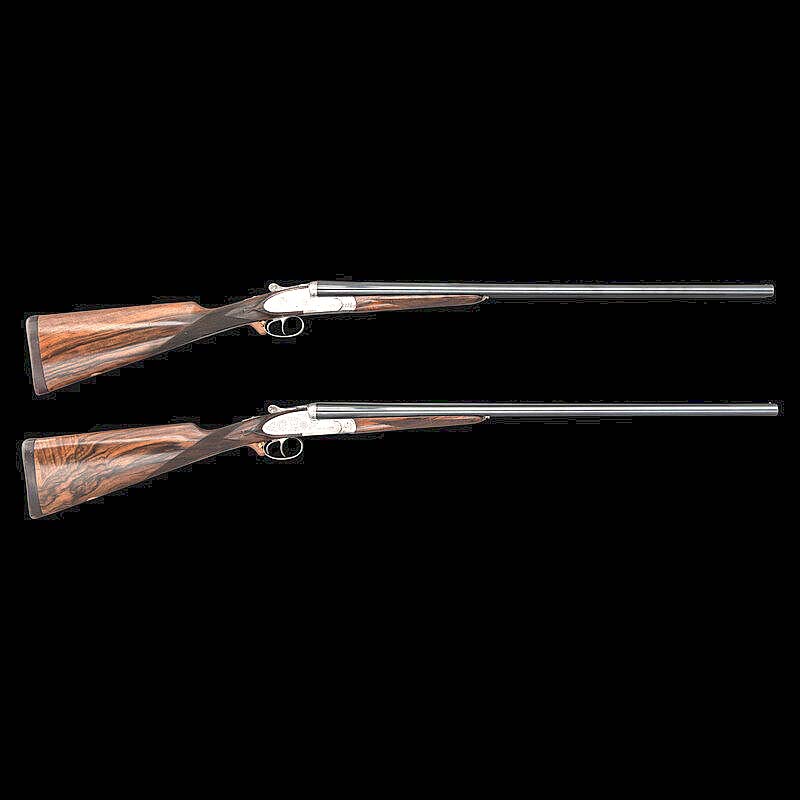
This matched pair of Arrieta (Spanish) Sidelock 20-gauge shotguns, 1987, walnut stocks with inlaid gold and brass sights, 27¾-inch-long barrels, earned $11,400 ($10/15,000).
In 1941, Colonel Townsend Whelen, a notable outdoorsman and soldier, wrote, “My favorite big-game rifle for the past 15 years has been a .270 Winchester Model 54, fitted with a 2½-power Zeiss Zielklein scope with Griffin and Howe mount.” That gun, which was given to Whelen from Winchester in 1926, came to auction in this sale and realized $9,600. The gun was paired with an assortment of Whelen’s notes and related ephemera, including 67 scoring cards and note cards ranging from 1925 to 1946.
A pre-war, first-year production Colt Super 38 pistol, made circa 1929, was also bid to $9,600. Housed in a French-fit leatherette-covered wooden case with purple lining, the gun had a blued finish and checkered walnut thumb swell target grips. Additionally, the lot was sold with a two-tone Colt Super 38 automatic magazine.
The American Historical Ephemera and Photography auction was unexpectedly led by a collection of six late Eighteenth and Nineteenth Century almanacs. Most notable in the set was Andrew Beers’ Webster’s Calendar: Or, the Albany Almanack, For the Year of Our Lord 1803 (Albany: Charles R. and George Webster, 1802), owned by minster and missionary Samuel Kirkland. Throughout the almanac were journal entries and notes written by Kirkland from 1803-04, some of which related to his work with Native Americans and references to letters between him and General Henry Dearborn, Secretary of War and other prominent figures. The other almanacs included in the lot were dated 1792, 1795 (2), 1801 and 1853. Together, the collection soared past its humble $800 high estimate to achieve $28,575.
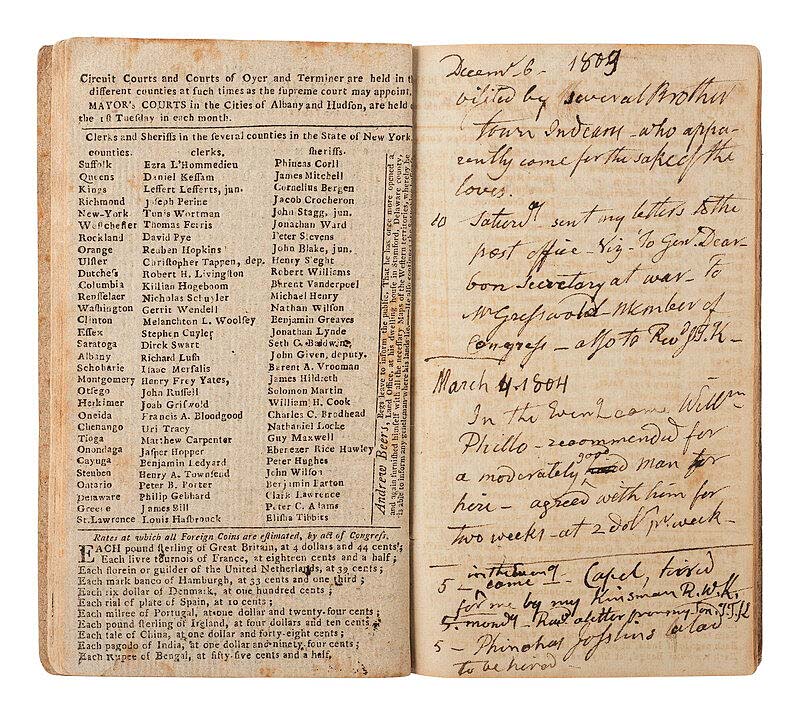
This copy of Webster’s Calendar: Or, the Albany Almanack, For the Year of Our Lord 1803 had journal entries, spanning 1803-04, by the Rev. Samuel Kirkland (1741-1808). It and five other almanacs sold to a new customer for $28,575 ($600/800).
As the sale’s name suggests, photography was a major collecting category with significant results. Leading in that category was a circa 1904 orotone photograph of “Canyon de Chelly” in Apache County, Ariz., taken by Edward Sheriff Curtis. Curtis captured a group of Native Americans traveling on horseback along the flat terrain of the desert at the base of the towering canyon. In its original Curtis Studio giltwood frame, this photograph came from the Palm Beach, Fla., estate of Jill L. Leinbach and sold for $22,860 against a high estimate of $5,500. Another Curtis orotone, “The Three Chiefs — Piegan” went out at $8,890. In this print, three Piegan chiefs sat atop their horses in a field beside a small pond. The Library of Congress dated this photograph to circa 1900 and noted that it was published in Curtis’ The North American Indian, supplementary volume 6.
For those looking for older photos, an anonymously taken ninth plate daguerreotype of an interracial couple, circa 1850-55, may have been quite the historic find. Freeman’s | Hindman cataloged the image as “remarkable” and wrote, “As of this writing we have been unable to locate another daguerreotype of a Black man and white woman in an overtly romantic display. Was the portrait a political statement, a token of love, or both? And why the small plate size when the standard of the day was the sixth plate, an image twice as large? Who took the image?” Despite the uncertainty around the actual facts of the photograph, it was clear that it was historically significant. The image was found in the estate of Stephen Cline (Ashland, N.Y.), a New York City antiques dealer who “moved upstate after being estranged from his family for his participation in the Stonewall Riots of the late 1960s,” according to the auction catalog. After Cline’s death, it was discovered and sold to the current consignor at auction in 2012. Freeman’s | Hindman realized $20,320 for the image.
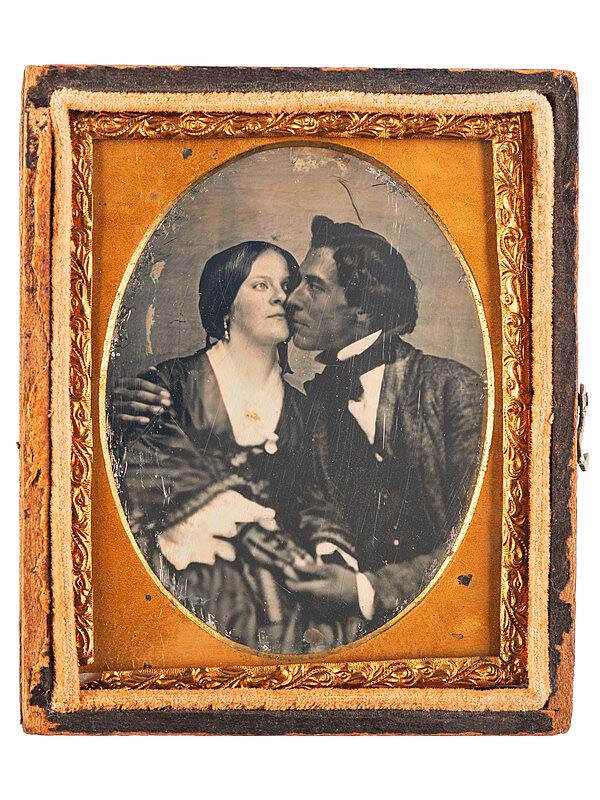
Anonymously taken circa 1850-55, this ninth plate daguerreotype depicted an interracial couple; it went out at $20,320 ($30/50,000).
A collection of photographs from a similar time period, though with a different tone, made $16,510. These were all associated with South Carolina doctor and plantation owner Sidney Smith. In the collection were what may be some of the earliest images of a known plantation home and of African Americans posed with their enslaver. The collection comprised circa mid to late 1840s oversize quarter plate daguerreotype of Gravel Hill Plantation, near Robertville, St Peter’s Parish, Beaufort District, S.C., and a tintype copy of the image; a circa mid 1840s-50 sixth plate daguerreotype of Sidney Smith, his brother James Laurens Smith, daughters Arabella and Julia Smith, with two unidentified African American men, almost certainly enslaved subjects; a sixth plate daguerreotype Arabella and Julia Smith, circa mid 1840s-50; a sixth plate daguerreotype of Sidney Smith, possibly a self-portrait, circa 1845, and a tintype copy of the portrait; and four other images of Smith’s family members. The auction catalog included extensive historical information about Smith and his plantation home at Gravel Hill.
Dated 1877, an 11-panel albumen photograph “Panorama of San Francisco taken from California Street Hill” achieved $12,700. Taken by Eadweard Muybridge, the 11 photos were mounted to linen-backed cardstock and housed in an original brown cloth portfolio with gilt titled to the front board. The images had conservation work done and sold with a conservation document.
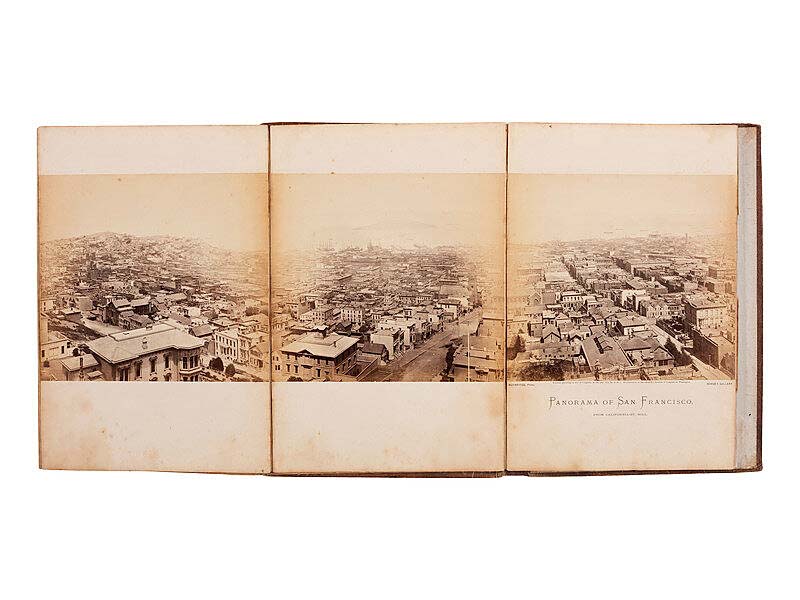
Eadweard Muybridge’s (1830-1904) 1877 “Panorama of San Francisco from California Street Hill,” an 11-panel albumen photograph panorama, 85 inches long in total, brought $12,700 ($12/16,000).
Another panoramic view, this one of a Pennsylvania coal region, led the Visions of America: The Stephen White Collection auction. Thomas H. Johnson’s three-section panoramic view of Carbondale, Penn., circa 1863-65, realized $8,890. Each photograph in this view was on a cardstock mount and titled, numbered and labeled “Del. & Hud. Canal Co.,” to the bottom. The catalog remarked, “Rich and detailed, these prints depict a rural America on the verge of industrialization rarely seen in Nineteenth Century American photography.”
Prices quoted include the buyer’s premium as reported by the auction house. On November 14, Freeman’s | Hindman will conduct two auctions: Post War and Contemporary Art in New York City and Fine Printed Books and Manuscripts, Including Americana in Chicago. For information, www.hindmanauctions.com or 312-280-1212.














